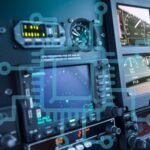Arduino boards have emerged as beacons of creativity and innovation, revolutionizing the world of DIY electronics and the broader Maker Movement. These versatile microcontroller platforms have empowered enthusiasts, students, and professionals to turn their imaginative ideas into tangible, interactive projects. As open-source hardware, Arduino boards provide a gateway to electronics, coding, and limitless possibilities.
A Gateway to Electronics
At the core of Arduino’s appeal lies its accessibility: the user-friendly design and an open-source philosophy lower the entry barrier for individuals interested in electronics and programming. Arduino boards come in various shapes and sizes, offering a range of features and capabilities. From the beginner-friendly Arduino Uno to the more advanced Arduino Mega, these boards serve as versatile canvases for novices and experienced makers to bring their electronic visions to life.
Educational Impact
Arduino boards have found a prominent place in educational settings, transforming how students learn about electronics and programming. The hands-on, experiential nature of working with Arduino facilitates a deep understanding of concepts such as circuits, sensors, and coding logic. By engaging in real-world projects, students grasp theoretical knowledge and develop problem-solving skills and a passion for creative exploration.
The Essence of Open Source
One of Arduino’s defining features is its commitment to open-source principles. The Arduino community, a global network of makers, educators, and enthusiasts, actively collaborates and shares a vast repository of projects, tutorials, and code. This collaborative spirit fosters a culture of continuous learning and innovation. Whether through online forums, workshops, or maker fairs, the community-driven nature of Arduino has become a catalyst for collective problem-solving and skill development.
Beyond Prototyping
While Arduino boards are often associated with prototyping and hobbyist projects, their influence extends into professional and industrial realms. The simplicity and flexibility of Arduino make it an attractive platform for rapid prototyping in product development. Many startups and established companies leverage Arduino for proof-of-concept designs, ensuring a quick and cost-effective transition from idea to tangible prototype. This flexibility has blurred the lines between the DIY maker community and the professional world, showcasing the adaptability of Arduino boards.
Conclusion
Arduino boards stand as more than just electronic components; they are catalysts for a broader cultural shift in how we approach technology. Arduino has become a driving force in the Maker Movement by democratizing electronics, fostering hands-on learning, and promoting a spirit of collaboration. From classrooms to workshops and from prototyping to industrial applications, Arduino’s influence continues to grow, inspiring a new generation of creators to embrace the world of electronics, programming, and innovation. The impact of Arduino boards goes far beyond the physical circuits they enable; they spark a creative flame that ignites a passion for exploration and discovery in the hearts of makers around the globe.












